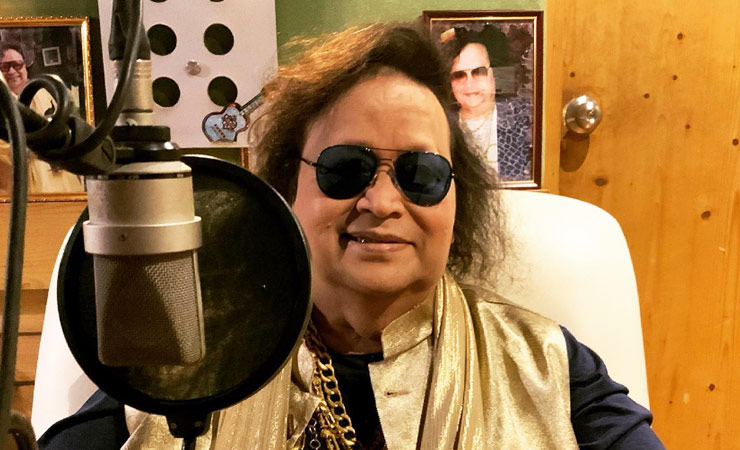A magic voice that never waned


Lata Mangeshkar
Yes, Lata Mangeshkar cannot die. She is perpetually imprinted on our collective souls and beings in a way that lesser performing artistes can only dream of. With her singular brilliance, she defined an entire epoch of Indian popular culture, and beyond, singing in virtually every language in which songs are made in this vast and diverse country.
That is not all. With the countless numbers that she crooned and the manner in which she did it, Lata shaped the Hindi film heroine both in terms of her character and her methods of giving vent to her innermost feelings and urges.
Lata’s refined, mellifluous voice defined femininity on the big screen and created a context in which young women expressed romantic love, played their roles in domestic settings or sought to branch out and feel at home in the world around her in a newly-independent nation where liberty and responsibility went hand in hand.
Lata lent her voice to every major actress who graced Hindi cinema in the second half of the 2oth century, from Nargis, Waheeda Rehman and Meena Kumari to Madhuri Dixit, Preity Zinta and Kareena Kapoor. Saibal Chatterjee pays tribute to the legendary singer
Music directors rarely thought of her when they looked for a singer for a song on the lips of the vamp or the nautch girl (barring famously for Pakeezah’s Meena Kumari). It was leading ladies, embodiments of virtues and restraint, that she primarily lent her voice to.
If that gives the impression that Lata’s bandwidth was limited, nothing could be further from the truth. Her perfect pitching, musical sense emotional resonance allowed her to do justice to a wide variety of Hindi film song – from the coy to the coquettish, the staid to the spicy. She sang sad songs, romantic numbers, soulful ghazals, devotional ditties and semi-classical compositions with equal skill.
Lata lent her voice to every major actress who graced Hindi cinema in the second half of the 2oth century, from Nargis, Waheeda Rehman and Meena Kumari to Madhuri Dixit, Preity Zinta and Kareena Kapoor. Every girl who has had to sing and dance in Hindi films since the late 1940s has had to depend on the voice that could do no wrong.
She was the go-to singer for three generations of music directors. It began with Khemchand Prakash, Husnlal Bhagatram, Naushad, Vasant Desai, C. Ramchandra, Sachin Dev Burman, Shankar-Jaikishan, Hemant Kumar and Salil Chowdhury and continued with Rahul Dev Burman (with whom she had as fruitful an association as her younger sister Asha Bhosle), Laxmikant-Pyarelal, Kalyanji-Anandji and Bappi Lahiri before winding up with Anu Malik, Nadeem-Shravan, Anand-Milind, Jatin-Lalit and AR Rahman.
Lata’s phenomenal longevity is best illustrated by the fact that while she sang for music director Chitragupt, she also worked with his sons, Anand and Milind. She sang for Anu Malik and Rajesh Roshan and their respective fathers, Sardar Malik and Roshan. No big deal for a crooner who started out as a teenager and was still churning out hits six decades later. But with age catching up, she withdrew from active playback singing a decade and a half back. She never, however, went out of vogue because she was, and will always be, the gold standard. After she lost her father, actor and singer Dinanath Mangeshkar when she had barely stepped into her teens, Lata was first mentored by Master Vinayak and then, after his death, by Ghulam Haider. The latter gave Lata her first Hindi film song, Ab darne ki koi baat nahi, a duet with Mukesh for the film Majboor, starring Kishore Kumar and Nalini Jaywant.
Haider was also instrumental in introducing Lata to film producer Sashadhar Mukherjee, who had broken away from Bombay Talkies to launch his own banner, Filmistan, in collaboration with Ashok Kumar, Rai Bahadur Chunilal (composer Madan Mohan’s father) and Gyan Mukherjee. She had a foot in the door. And there it stayed.
She recorded Uthaye jaa unke sitam for Mehboob Khan’s Andaz (1949), which had music by Naushad. The same year, Lata sang Aayega aanewala aayega for the Bombay Talkies film Mahal for which Naushad’s mentor Khemchand Prakash composed the music. Her ascent from there on was meteoric.
Lata quickly eclipsed Hindi cinema’s first crop of female playback singers – Shamshad Begum, Zohrabai Ambalewali, Rajkumari, Amirbai Karnataki and Suraiya, whose singing was rooted in either the classical gharanas or the kothas. Lata’s voice was thinner, softer and marked a timbre and tone perfectly suited to the fast-modernising recording studios in the 1960s.
Filmmakers like Raj Kapoor, Bimal Roy, Kamal Amrohi and B.R. Chopra, among many others, formed enduring creative partnerships with composers Shankar-Jaikishan, SD Burman, Salil Chowdhury, Roshan, and Madan Mohan. And Lata Mangeshkar quickly became an integral part of the musical universe that they built. She was the first choice when B.R. Chopra made his maiden film (Afsana), Raj Kapoor delivered his first major hit (Barsaat), Kamal Amrohi made his directorial debut (Mahal) and Bimal Roy mounted his first home production (Do Bigha Zamin). Their careers took off and Lata Mangeshkar, as able a musical ally that they could have hoped for as they were building their own fortunes, soared. The years rolled by, the voice never wavered. Lata’s sister, the irrepressible Asha Bhosle was around and carving her own niche, but her only real competitor was she herself and that rival only got better with time.
The writer is an award-winning Indian film critic







